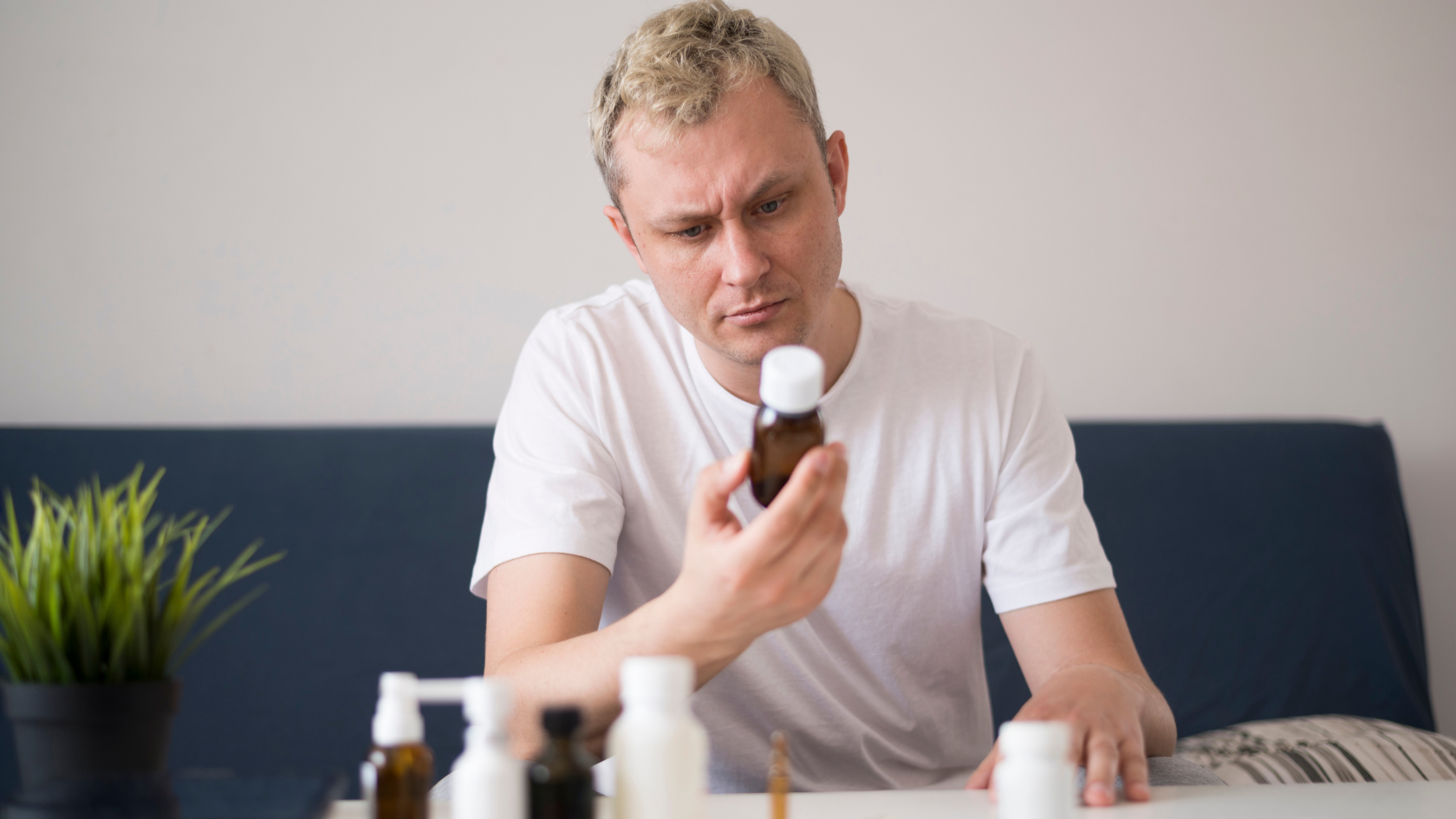Aromatase inhibitors (AIs) sound complex, but think of them as tiny gatekeepers that slow the enzyme aromatase, the enzyme that turns some of your testosterone into estrogen. When you’re on testosterone replacement therapy (TRT), that extra conversion can cause fluid retention, sore nipples, or mood swings. Using the right AI at the right dose keeps your testosterone working for you instead of slipping away as estrogen.
You’ll usually hear about three prescription AIs: anastrozole (Arimidex), letrozole (Femara), and exemestane (Aromasin). Doctors may start with very small doses, often 0.25 mg to 1 mg, two or three times a week, then adjust after blood tests show where your estrogen lands. The goal isn’t to “nuke” estrogen; it’s to keep estradiol in the sweet spot of roughly 20-30 pg/mL so bones, mood, and sex drive all stay steady.
Key Takeaways
- Aromatase inhibitors block the aromatase enzyme, reducing conversion of testosterone to estrogen, helping TRT users control fluid retention, nipple soreness, and mood swings.
- Common options include anastrozole, letrozole, and exemestane; start low and go slow, with dosing guided by labs to keep estradiol around 20–30 pg/mL.
- Not everyone on TRT needs an AI; it’s most helpful when estradiol runs high or gynecomastia risk is elevated, especially with higher body fat.
- Avoid over-suppressing estrogen. Very low estradiol can affect bone health, cholesterol, joints, mood, and energy; monitor regularly and adjust slowly with your clinician.
- Extras like zinc or resveratrol may support estrogen control, but prescription AIs are stronger; some men also see 20–50% testosterone increases.
Table of Contents
What Are Aromatase Inhibitors And How Do They Work In TRT?
At the center of every AI is one simple job: block aromatase. Aromatase lives in fat tissue, skin, brain, and even bone, converting androgens such as testosterone into estrogen. When you take an AI, the drug either parks itself inside the enzyme (non-steroidal blockers like anastrozole and letrozole) or destroys it outright (steroidal “suicide” blocker exemestane). With fewer active enzymes, less testosterone converts to estrogen, so your free-and-available testosterone climbs without cranking up the TRT dose.
Types You’ll Meet
- Non-steroidal, reversible: Anastrozole and letrozole bind temporarily; if you overshoot, lowering the dose usually fixes things fast.
- Steroidal, irreversible: Exemestane switches the enzyme off permanently until your body makes more aromatase. That longer “off” time can mean less frequent dosing but a higher risk of low estrogen if monitoring slips.
Who Might Benefit
- Men on TRT who show estradiol above 45-50 pg/mL and experience high-estrogen symptoms (breast tenderness, big swings in water weight).
- Men prone to gynecomastia from genetics or higher body-fat levels.
- Bodybuilders tapering off supraphysiologic testosterone who want to reduce rebound estrogen.
Who Might Not Need One
Many guys process testosterone just fine. Studies and real-world clinics report that plenty of TRT users keep healthy estradiol numbers with no AI at all—proving this tool is optional, not automatic.
Key Take-Home Points
- Start low, go slow. Most providers begin at 0.25 mg anastrozole twice weekly and re-test in four weeks.
- Bloodwork beats guessing. Check total testosterone, estradiol (E2), and hematocrit regularly.
- Watch bones and mood. Estradiol under 15 pg/mL can raise fracture risk and trigger joint pain or low mood.
Benefits, Risks, And Best Practices For Aromatase Inhibitors In Testosterone Replacement Therapy
Benefits When Used Correctly
- Symptom Relief: Lower risk of water retention, acne, and breast tissue growth.
- Hormone Balance: Improves the testosterone-to-estrogen ratio without increasing testosterone dose.
- Potential Fertility Boost: By raising luteinizing hormone (LH) and follicle-stimulating hormone (FSH), AIs may improve sperm parameters in some hypogonadal men.
Risks Of Over-Suppressing Estrogen
- Bone Loss: Estradiol is vital for keeping bones strong; too little can thin bones over time.
- Cardio-Metabolic Changes: Very low estrogen may harm cholesterol ratios and vascular health.
- Joint & Mood Issues: Dry joints, fatigue, or irritability often flag overly aggressive dosing.
Best-Practice Checklist
- Aim, Don’t Annihilate. Keep E2 ~20-30 pg/mL—high enough for bones and libido, low enough to dodge breast tissue growth.
- Use Small Steps. Re-evaluate labs every 4-6 weeks before adjusting. Drastic swings lead to see-saw symptoms.
- Pair With Lifestyle. Dropping excess body fat reduces aromatase activity, sometimes letting you lower or stop the AI altogether.
- Stay Connected To Care. Regular consults with a hormone-literate clinician ensure safety, especially if you have heart, liver, or bone concerns.
Natural Or Supplemental Alternatives
While compounds like zinc, resveratrol, or grapeseed extract show mild aromatase-blocking in test tubes, none match prescription AIs for potency. Use them as supportive tools—never as a substitute when medical dosing is truly needed.
Ready to Feel Your Best?
Frequently Asked Questions
No. Only those whose estradiol climbs too high and feel estrogen-related symptoms usually need one. Many men do fine without any AI.
Typical starting plans are 0.25–1 mg two or three times per week, always personalized to lab results.
Check estradiol (E2), total and free testosterone, and optionally LH, FSH, and hematocrit every 4–6 weeks when adjusting doses.
Yes. Levels below about 15 pg/mL can raise fracture risk, worsen cholesterol, and dampen mood or libido.
Most natural supplements are weak and untested. Always talk to your provider before combining them with prescription AIs.
Water retention and nipple soreness often ease within two weeks, but full hormonal rebalance may take one to two months of careful titration.
Slightly. Blocking aromatase can lift testosterone 20-50% in some men, but results vary and depend on your baseline hormone profile.
Possibly. Less body fat means fewer aromatase enzymes, so your doctor might taper or discontinue the AI if labs stay in range.
Ask your clinician for a dose cut or longer spacing between pills; joint pain often signals estrogen has dropped too low.
With proper monitoring, many men use low-dose AIs for years. The key is regular lab work, bone checks, and ongoing dialogue with your healthcare team

